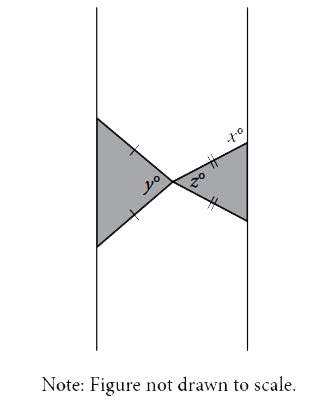Consider the following reaction which proceeds in a closed vessel.
3X→2Y+Z
The rate of disappearance of X,−Δ[X]Δt is found to be 0.075 mol
L−s− calculate Δ[y]ΔtandΔ[Z]Δt
The correct Answer is:0.05molL−s−,0.025molL−s−1
The reaction3X→2Y+Z can be written as:
X→23Y+13Z
since −Δ[X]Δt=0.075mol−1s−1, we have Δ[Y]Δt
=23×0.075=0.05molL−1s−1
Δ[Z]Δt=13×0.075=0.025molL−1s−1
Topper's Solved these Questions
- BOOK - ICSECHAPTER - CHEMICAL KINETICSEXERCISE - INTEXT QUESRTIONS81videos
CHEMICAL KINETICS
- BOOK - ICSECHAPTER - CHEMICAL KINETICSEXERCISE - EXERCISE (PART- I (OBJECTIVE QUESRTIONS)A.FILL IN THE BLANKS)54videos
CHEMICAL KINETICS
- BOOK - ICSECHAPTER - CHEMICAL KINETICSEXERCISE - ISC EXAMINATION QUESTIONS (NUMERICAL PROBLEMS )57videos
CHEMICAL KINETICS
- BOOK - ICSECHAPTER - BIOMOLECULESEXERCISE - ISC EXAMINATION QUSTIONS (PART-I)(DESCRIPTIVE QUESTIONS)21videos
BIOMOLECULES
- BOOK - ICSECHAPTER - CHEMISTRY IN EVERYDAY LIFEEXERCISE - EXERCISE (PART - II (DESCRIPTIVE QUESTIONS) (LONG ANSWER QUESTIONS))19videos
CHEMISTRY IN EVERYDAY LIFE
Similar Questions
Comment on the spontaneity of a process when
ΔH>0,TΔS<0View SolutionThe drift speed is defined as vd=(Δl/Δt)where (Δl)isthedistancedrifted∈alongtime(Delta t).Whydon'twedef∈ethedriftspeedasthelimitof(Delta l//Delta t)as (Delta t (rarr)0)?
View Solution1 mol each of the following compounds is dissolved in 1 L of
solution. Which will have the largest ΔTb value ?View SolutionIf the equations of three sides of a triangle are x+y=1,3x+5y=2andx−y=0 then the orthocentre of the triangle lies on the line/lines
View SolutionCorrect relation for isothermal reversible expansion of an ideal gas is ΔU=0, ΔS=0,ΔG=−TΔS, ΔH=0
View Solution
Two isosceles triangle are shown above. If 180-z=2y and y=75, what is the value of x?View SolutionEnthalpy of formation of NH3 is -X kJ and ΔHH−H, ΔHN−H are respectively Y kJmol−1 and Z kjmol−1. The value of ΔHN=Nis
View SolutionThe equation of the sides of a triangle are x+2y+1=0,2x+y+2=0andpx+qy+1=0 and area of triangle is Δ .
View SolutionThe coordinates of the vertices of a triangle are (4, -3), (-5, 2) and (x, y). If the centroid of the triangle is at the origin, show that x=y=1.
View SolutionDraw the graphs of the following equations: 2x−3y+6=0, 2x+3y−18=0, y−2=0 Find the vertices of the triangle so obtained. Also, find the area of the triangle.
View Solution

